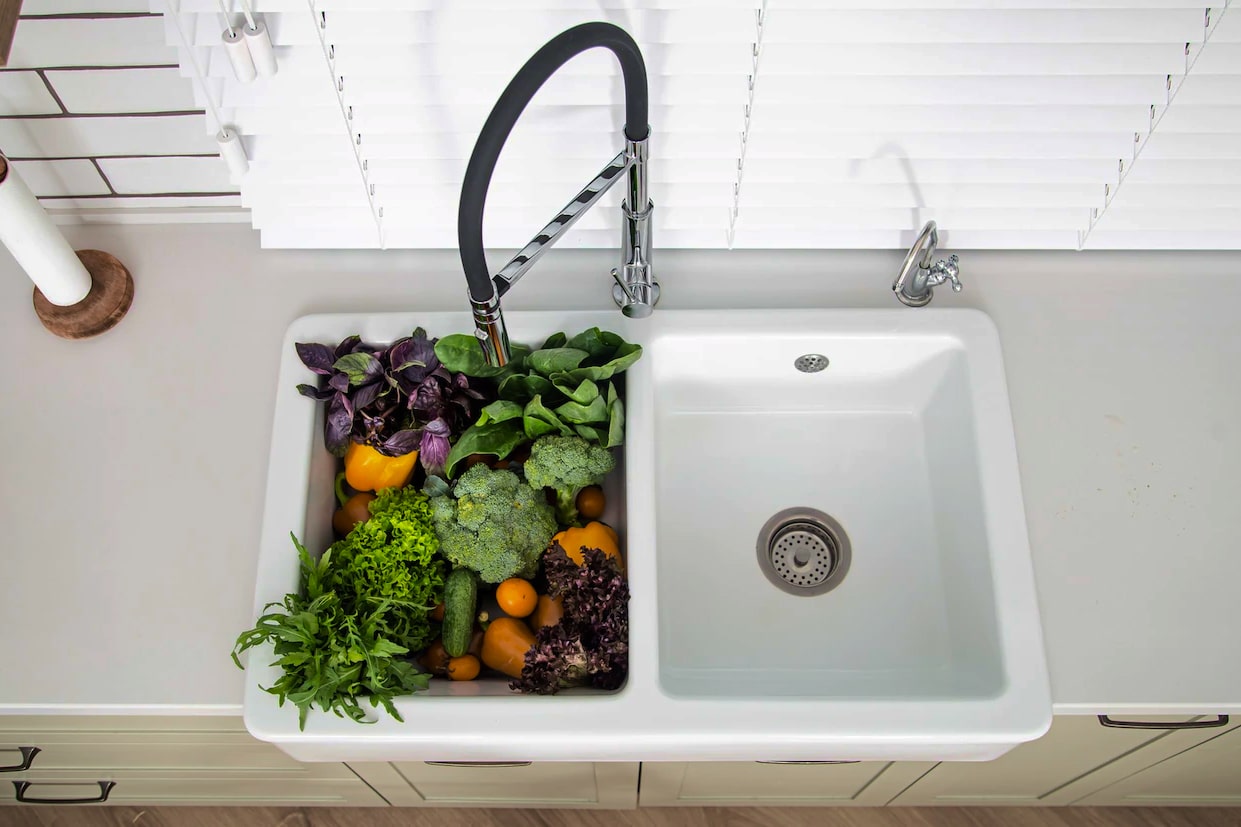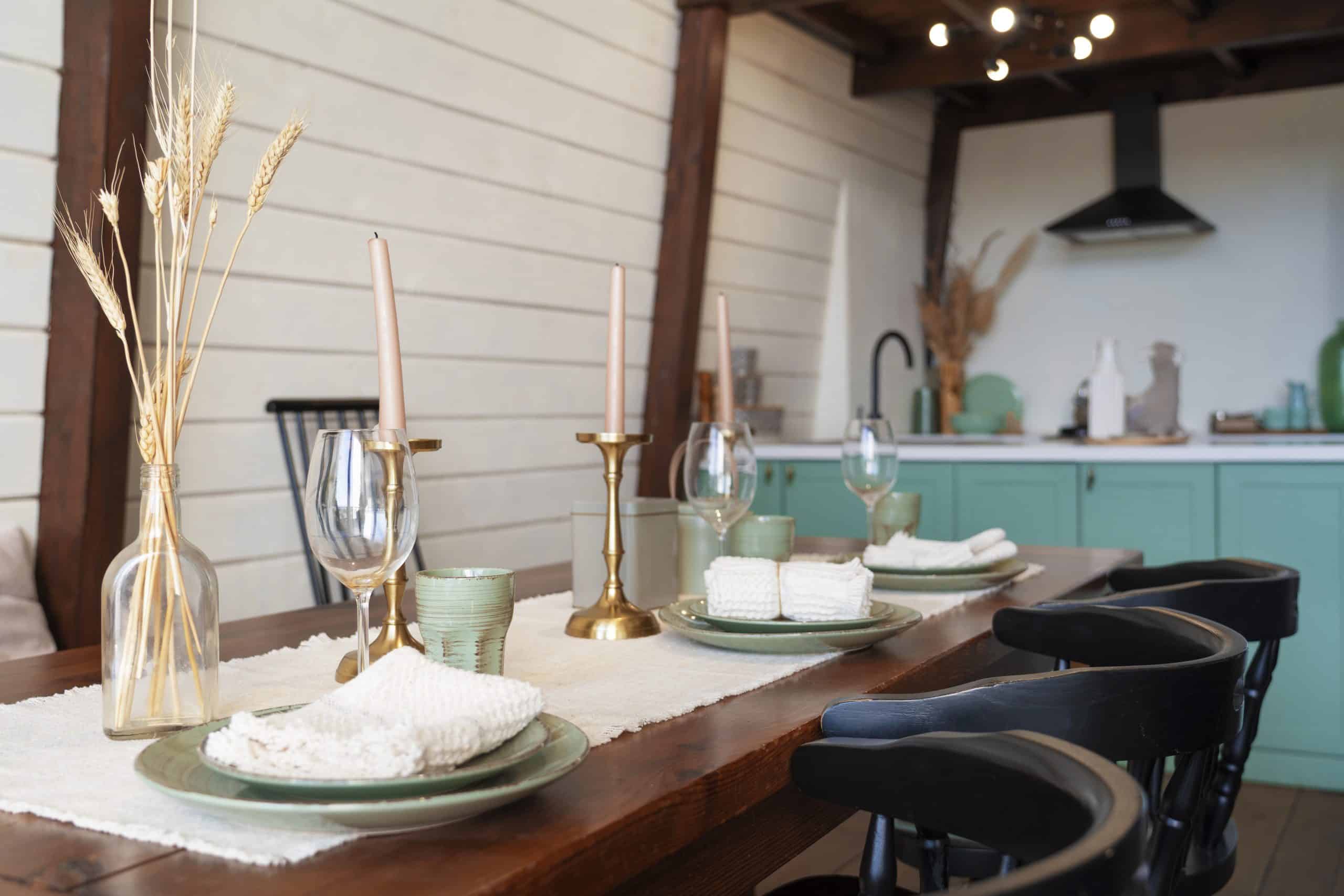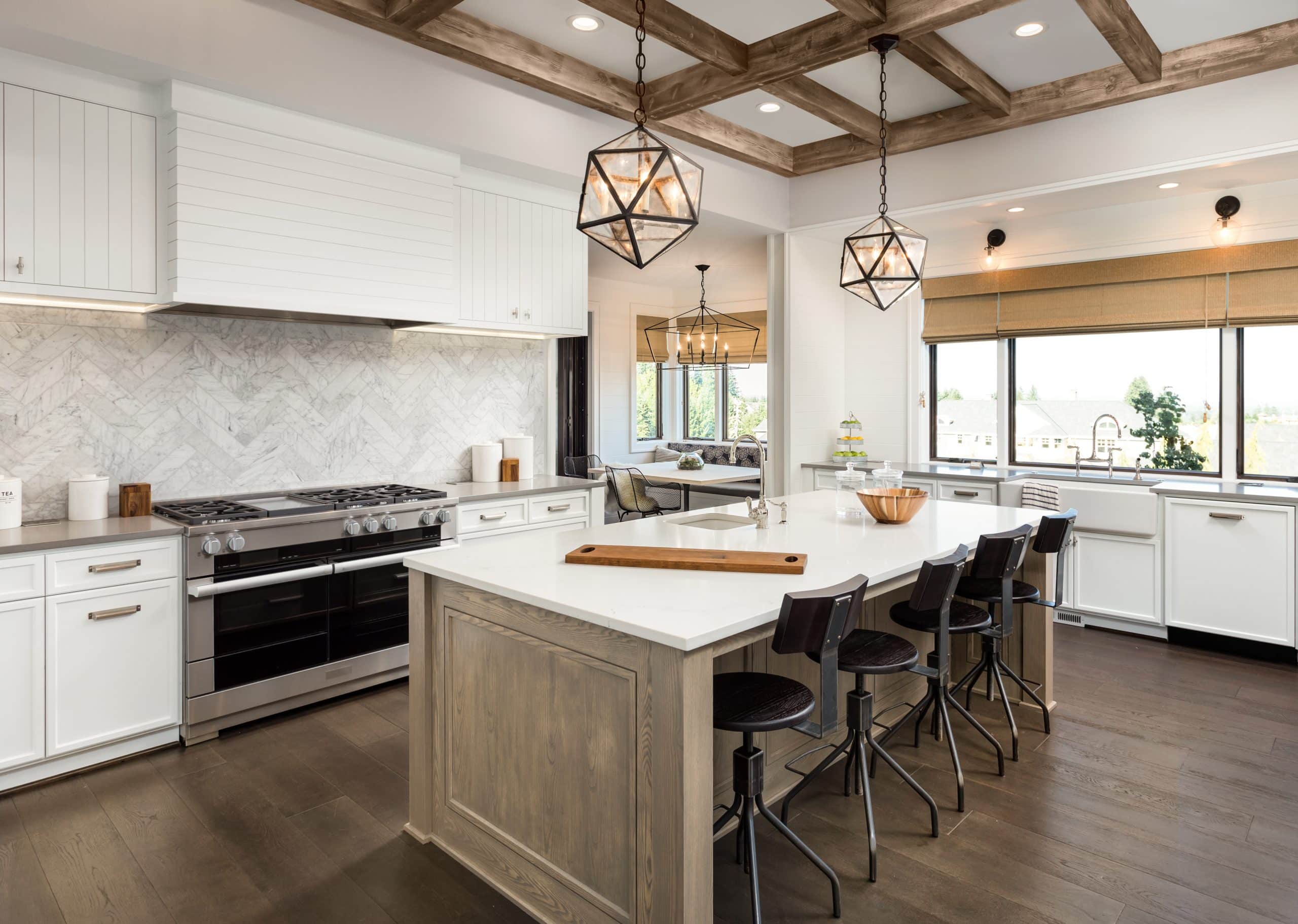When measuring your kitchen sink, there are in fact a number of factors to keep in mind, even if it might seem like one of the simpler and more reasonable DIY household tasks. By taking precise measurements, you can guarantee that the sink will fit your space correctly and that the installation process will go without a hitch.
What You Need To Know Before Measuring Your Kitchen Sink
It’s crucial to determine what kind of replacement you require before starting the kitchen sink measurement process. Important considerations include the size of the basin, the depth of the countertop, and the proportions of the cut-out. The size and measurements of the waste drop must also be known if you’re replacing an undermount sink. After compiling all of this data, you may start measuring your kitchen sink.
Once you have gathered all of this information, you can begin measuring your kitchen sink.
The Best Way To Measure It?
To ensure your new kitchen sink will fit properly, you’ll need to take some measurements. With a few simple tools, you can easily get the dimensions you need.
Here’s how:
1. You’ll need a tape measure in order to figure out the dimensions of your sink that’s currently in place.
2. Write down these numbers or take a picture of them so you have them handy when shopping for a new sink.
3. When looking at potential new sinks, pay attention to the dimensions listed in the product description.
4. Compare these numbers to the ones you took for your old sink.
5. If you’re unsure about whether or not a particular sink will fit, don’t hesitate to ask a sales associate for help. They are usually more than happy to answer any questions you may have.
6. Remember that many sinks come with an overflow drain which means they are deeper than they are wide, while others are wider than they are deep.
7. The other thing to keep in mind is that the more square footage there is between your countertops and back wall, the bigger your sink should be for maximum efficiency of space use.
8. Once you’ve found a perfect match for size and shape, it’s time to buy!
Follow these tips to make sure you end up with the best possible deal:
- Shop around for a good price. If one store has something you like, call another store and see if they offer similar pricing – sometimes competition drives prices down even further! Don’t be afraid to spend some time on this step – it could save you quite a bit of money in the long run.
- Ask about special deals or discounts that might apply based on certain circumstances (such as buying multiple items). There are often times when stores will offer extra savings if you purchase two or more items together; just make sure they’re compatible before committing to anything!
How To Mark The Placement Of Your New Sink
The first step is to find the center of your current sink. In order to figure this out, you’ll have to take some measurements of the cabinet width from each direction and then divide that number by two. Then, measure the length of the cabinet from front to back and divide by two.
The point where these two lines intersect will be the center of your cabinet. Place one end of the measuring tape on that point and stretch it across to the other side of the cabinet. That distance is called the total reach for your new sink. You’ll need that measurement when you purchase a new sink or faucet set (of course!).
Once you have it, start marking out each corner of your new fixture with a pencil so you know exactly where to drill in screws or nails later on. You can then use these markings as guidelines to keep your new sink level when installing it into the countertop opening.
Preparing Your Kitchen Sink For Installation
After taking the applicable measurements, the next step is installing the sink and plumbing lines according to the instructions included with your purchase. Afterward, you can begin using your new sink! Keep in mind that your new sink should extend past the front edge of the countertop by 1⁄2 inch on all sides if it’s not self-rimming (if it is self-rimming then it doesn’t matter).
For an undermount installation, make sure there’s 1⁄4 inch clearance between the underside of the sink and bottom surface where it meets up with adjacent cabinets or cabinetry If this clearance isn’t maintained, water may leak from underneath. If you’re installing a drop-in sink, check for access holes in the cabinet below.
- If necessary, drill them out before proceeding to install the drop-in sink and follow the manufacturer’s instructions for securing it into place.
- When installing an overmount basinet onto top of your existing kitchen cabinet or baseboard molding, install two support brackets at each end of the rim.
- Next, attach support braces along the wall above.
- Finally, fasten screws through both sets of brackets until they meet at the center so they are secure.
Place drywall anchors at each end of each bracket if needed before tightening screws completely until flush against the wall.
Benefits Of Installing A New Kitchen Sink
If you want to replace your old sink with a newer model, there are several benefits to doing so:
- Sinks come in all shapes and sizes, so you can pick one that fits your kitchen’s style. You might also want to choose a style that complements your countertops and other fixtures.
- Newer sinks have more modern features like pull-out spray heads, which make it easier to clean dishes or wash your hands. They also often come with drainage racks that help keep the area around the sink clear of spills.
- A new sink will likely last longer than one that’s been damaged by years of wear and tear or stained by food particles from your cooking adventures.
- You may need to replace parts such as faucets at some point anyway — especially if they’re old or leaking — so why not save yourself some money by installing a whole new sink at once?
Key Takeaways
When measuring your kitchen sink, the most crucial thing to keep in mind is to take accurate measurements. Get the length of the sink, the width, and the depth using a tape measure. You’ll want to make sure that you write all of these measurements down the first time you take them so you don’t have to repeat the process twice.
You may start looking for a new kitchen sink that will properly fit your area after you have your measurements.



